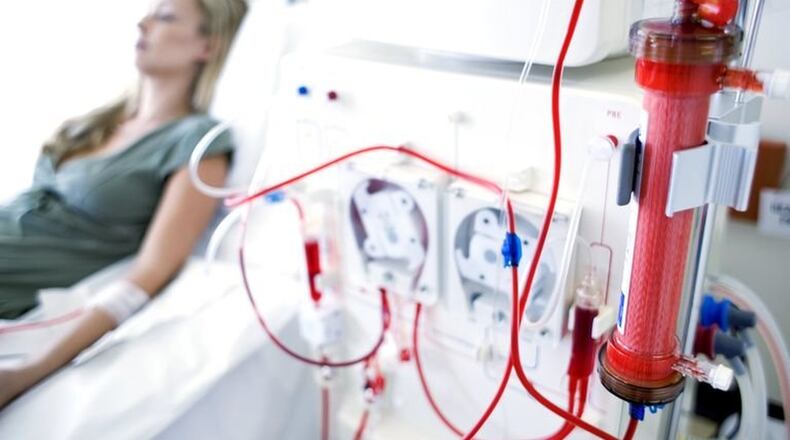The ballot issue was poised to be a well-funded fight, with millions of health care dollars at stake. The decision comes after opponents of the issue have begun airing television ads across Ohio.
If the ballot initiative had been brought to voters and approved this November, it would have created a constitutional amendment that would have capped the amount dialysis centers can charge to 115 percent of the cost of the service.
The proposed amendment also called for annual state inspections of kidney dialysis clinics and mandate rebates for charges above “reasonable charges” for treatments.
MORE: Medicare’s tab for dialysis doubles in 10 years
The Ohio Renal Association, which represents dialysis providers, brought the challenge against the Kidney Dialysis Patient Protection Amendment Committee.
The committee fell short of the required 305,591 valid voter signatures and was given 10 days to make up the shortage. On Aug. 1, the committee submitted an additional 41,122 signatures to the Secretary of State.
The committee supporting the amendment includes three officials with the SEIU District 1199, a union that represents health care and other workers.
A message seeking comment was left with the union.
Proponents had said the Ohio initiative would push for-profit dialysis corporations to spend more money on direct patient care and would stop dialysis companies from overcharging.
Anthony Caldwell, spokesman for SEIU District 1199, said in a statement it is shameful that the Ohio Supreme court relied on a technicality “to stop millions of Ohioans from voting on a critical issue affecting tens of thousands of people who need dialysis to stay alive.”
“Those patients will now be denied this chance for improved conditions and better, more sanitary care in the clinics, which this initiative would have produced,” Caldwell stated.
Opposition group Ohioans Against the Reckless Dialysis Amendment, which includes the Ohio Renal Association and 24 other organizations, in reaction to the ruling said that “the petitioners didn’t follow the law in their $4 million paid petition drive. The court challenge filed by the Ohio Renal Association was a prudent course of action given the potential harm this proposal could bring to Ohio’s 18,000 dialysis patients.”
MORE: Area congressman urges Trump to follow a ‘better way’ on trade
The Ohio Renal Association reports that 18,000 dialysis patients receive treatment at 326 clinics across the state. The association said the issue would have placed artificial limits on revenue that clinics receive for their services and mandate that they pay rebates to private insurance companies.
The Dayton Daily News previously reported on how dialysis has grown into a big business, with the majority of the clinics operated by two providers, DaVita and Fresenius Medical Care.
In 2016, Medicare expenditures for outpatient dialysis services were $11.4 billion, a 2 percent increase from 2015.
Dialysis treatment and other health care services for people with end-stage renal disease costs are averaging about $100,000 per year for Medicare beneficiaries, according to a 2016 report from U.S. Center for Medicare and Medicaid Services.
ELECTION COVERAGE
As this fall’s election season heats up, follow our team on our Ohio Politics Facebook page. Also follow our team on Twitter at @Ohio_Politics and sign up for our nightly Ohio Politics email newsletter.

